15 Shrubs You Can Plant Close To The House (With Pictures)
-

- Last updated:
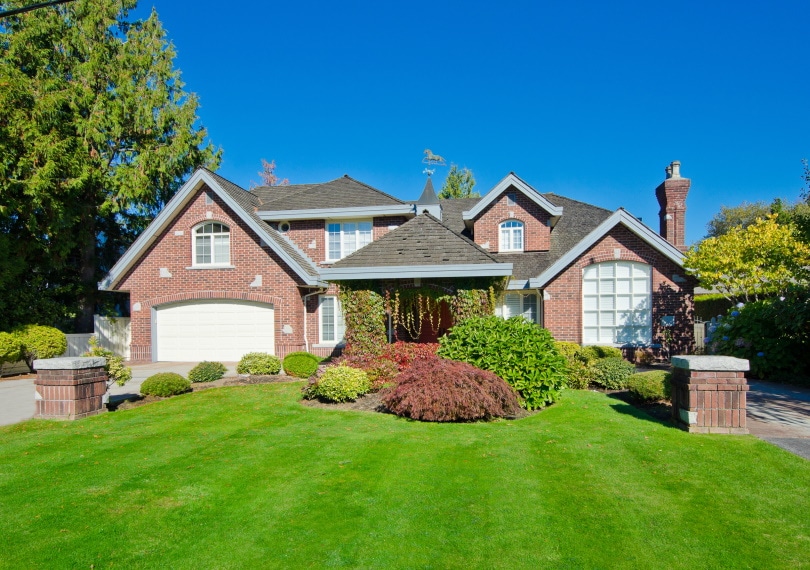
Modern landscaping often includes several species of shrubs and small trees. These plants not only look great, but they have several benefits as well. Many shrubs can be planted directly next to a house; they’re called foundation plants. This list contains fifteen of the most popular types of shrubs and small trees that are perfect to add to any backyard or garden.
Here are fifteen shrubs you can plant close to your house and not worry about.
The 15 Shrubs You Can Plant Close to the House
1. Boxwood
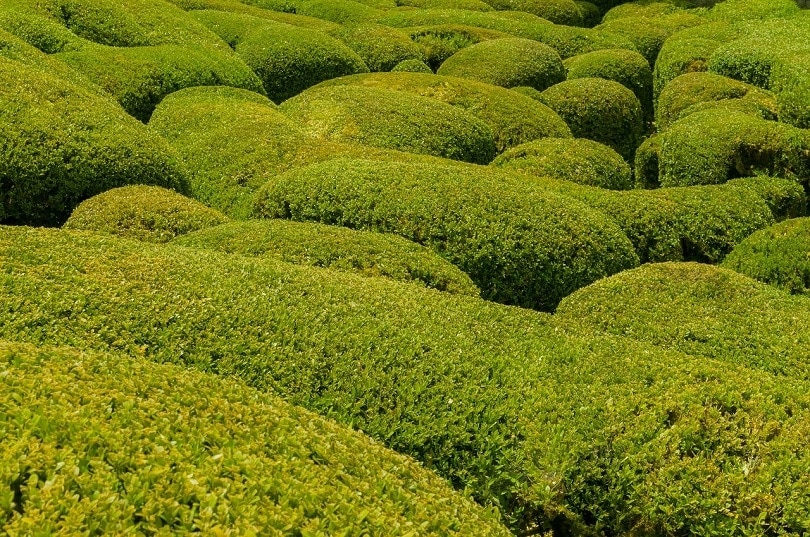
| Type | Evergreen |
| Height | 1-6 feet |
Boxwoods are traditional ornamental shrubs that have appeared in home landscaping for generations. These hardy shrubs stay green all year and provide a lot of shape and texture to any home. If trimmed, boxwoods can be kept as small as 1 foot tall, or you can let them grow to a more respectable 6 feet in height.
2. Inkberry
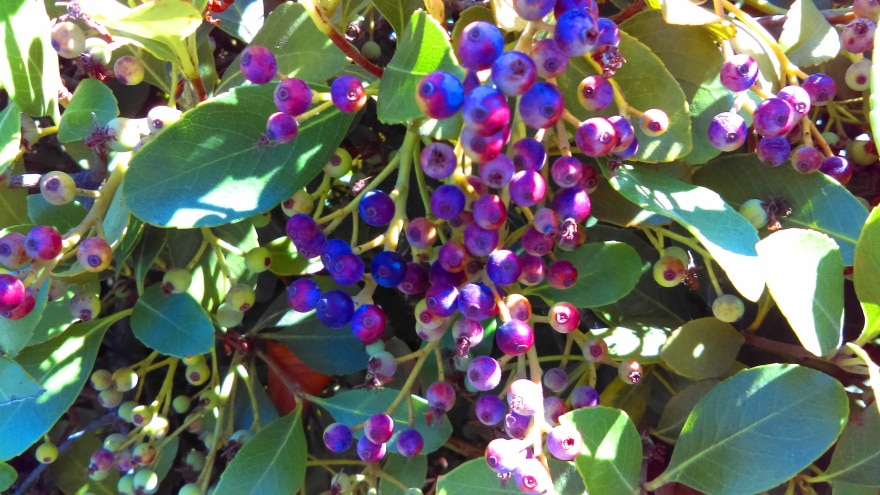
| Type | Evergreen |
| Height | 5-10 feet |
The Inkberry is another traditional landscaping shrub praised for its size and shape. It is a voluminous shrub that can be trimmed to fit almost any landscape look. Inkberry shrubs are related to holly and are evergreens. Inkberry bushes can grow as tall as 10 feet. If you use inkberry shrubs as foundation plants, ensure you have enough clearance overhead to prevent crowding.
3. Mountain Laurel
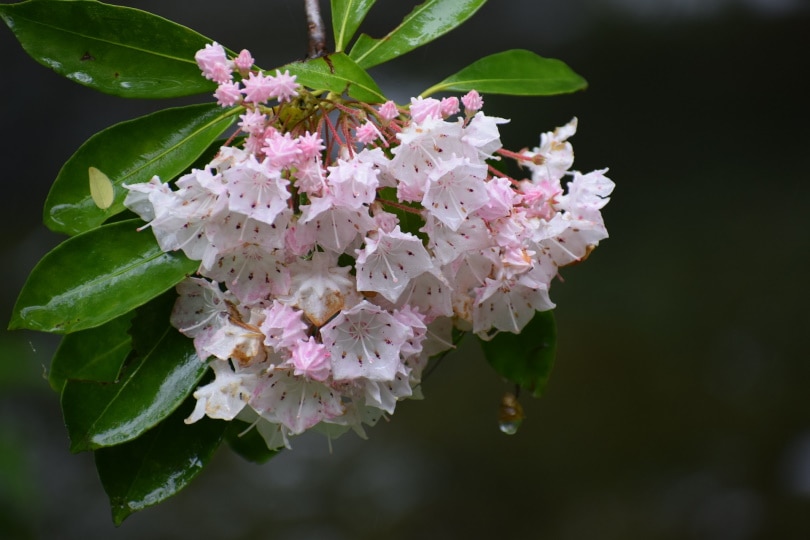
| Type | Evergreen |
| Height | 7-10 feet |
The mountain laurel is a hardy evergreen shrub known for its unique appearance and springtime flowers. The mountain laurel can grow up to 10 feet tall in most gardens but can grow 20 feet tall in the wild. Mountain laurel needs 6–8 hours of direct sun, but if you can keep it watered and in full sun, it is an excellent foundation plant.
4. Betty Prior Rose
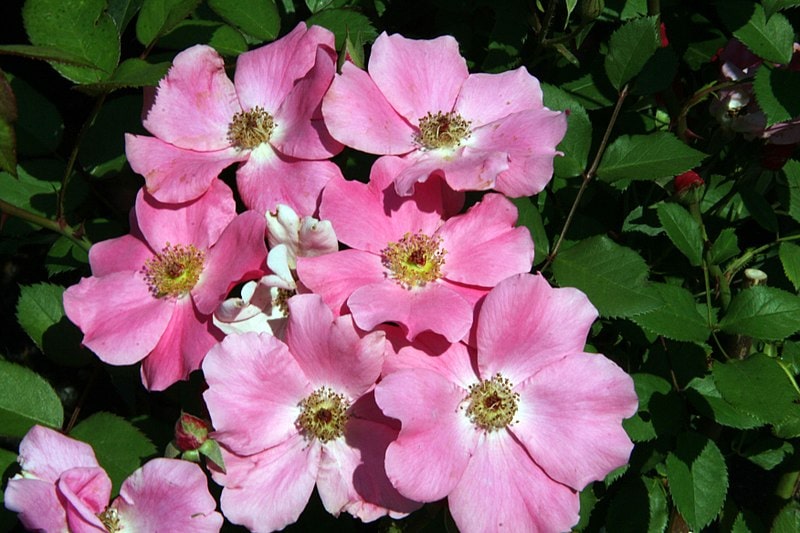
| Type | Flowering |
| Height | 3-4 feet |
Betty Prior roses are known for their long flowering season and fragrant aroma. The flowers are a bright shade of pink and will bloom for months. This makes them ideal foundation plants that will thrive close to the house. Not only are these roses pretty, but they also trap soil around their base, which prevents the ground from shifting near your house.
5. Holly
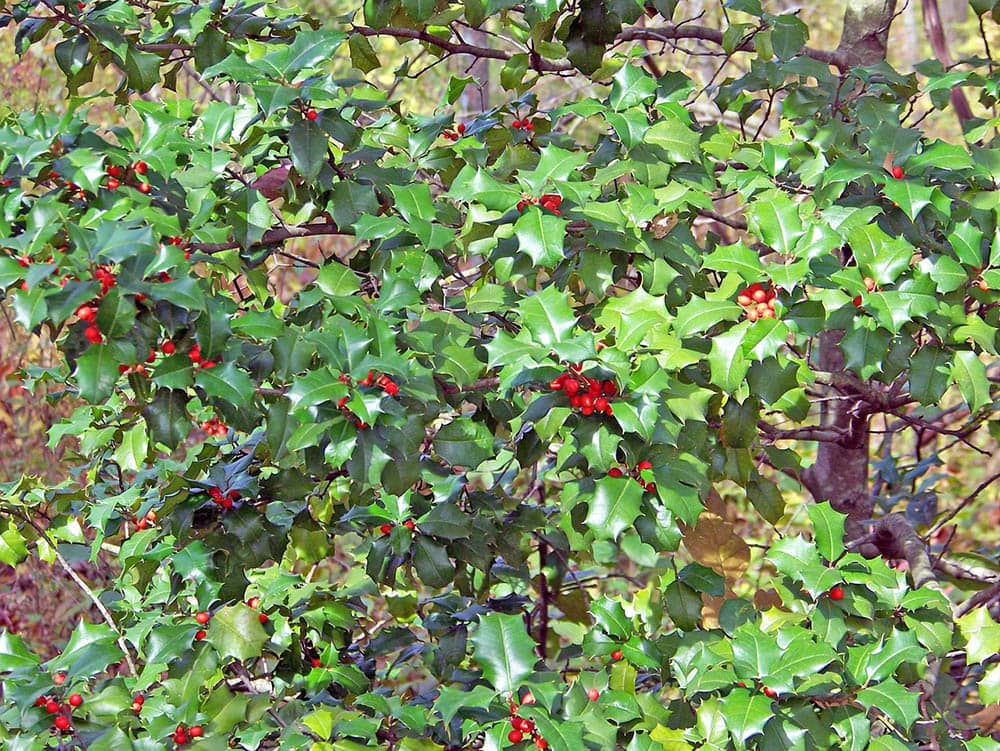
| Type | Evergreen |
| Height | 4-10 feet |
Holly is an extremely popular ornamental bush that is found all over the world. It is known for its unique leaves with sharp edges and distinctive red berries. Holly retains its alluring deep green color year-round and makes a perfect decorative foundation plant to install near the boundaries of your home.
6. Juniper
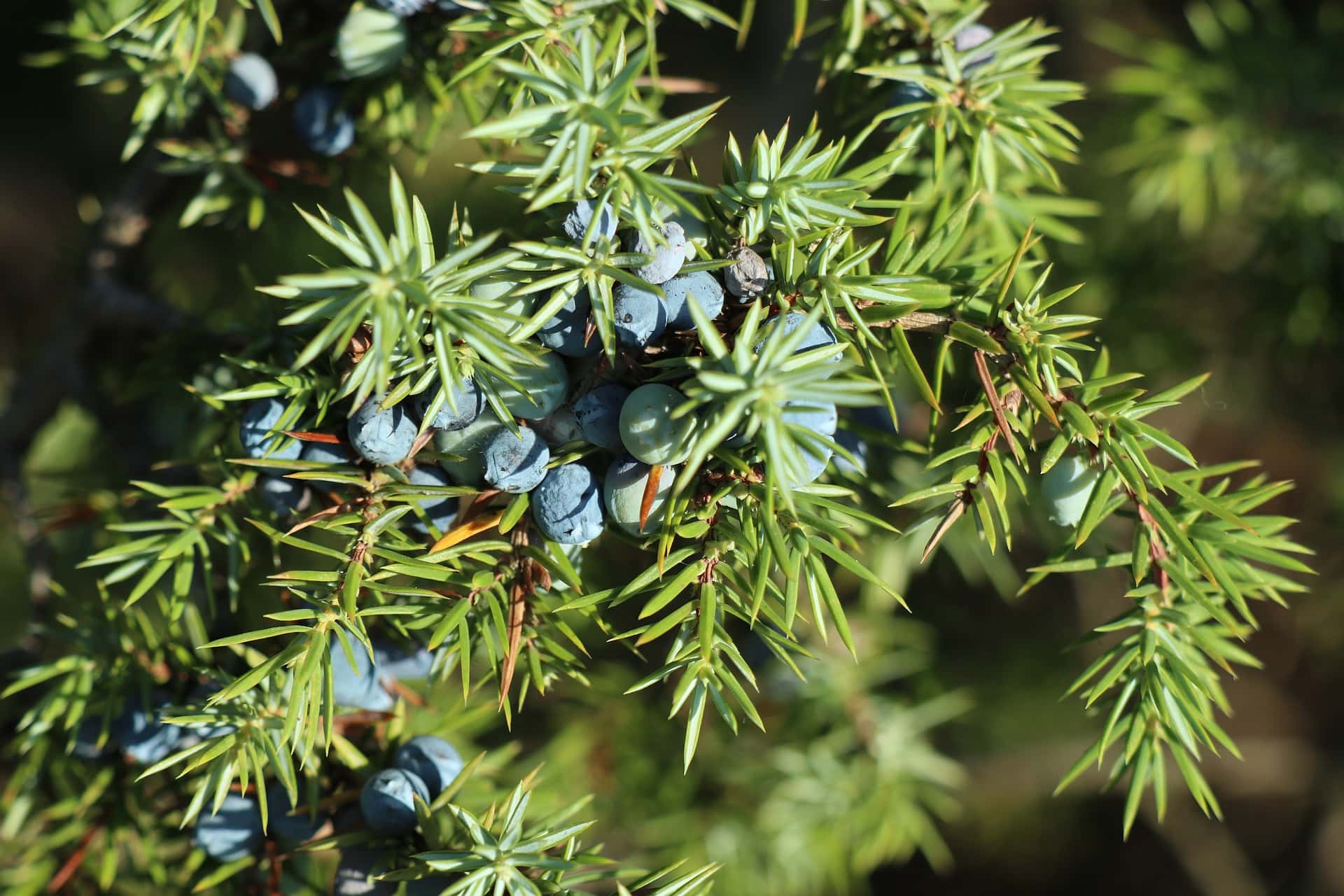
| Type | Evergreen |
| Height | 1-8 feet |
Junipers come in a wide range of sizes and are a favorite for gardens. Some juniper bushes are as short as 1 foot tall, while others can balloon upwards of 15 feet. Most people keep their junipers around 8 feet tall. Junipers are easy to care for, and their growth makes them versatile. Whether you want it as a focal point of your front garden or a small shrub next to a door, the juniper plant has many uses.
7. Dogwood

| Type | Tree |
| Height | 3-20 feet |
Dogwood trees are one of the only ornamental plants not native to Asia. Dogwoods hail from North America. Depending on the conditions, they can be planted as small shrubs or tall trees. Most people who have dogwoods as foundation plants keep them short, like shrubs. Dogwoods are known for their abundant flowers that bloom throughout the springtime.
8. Crepe Myrtle
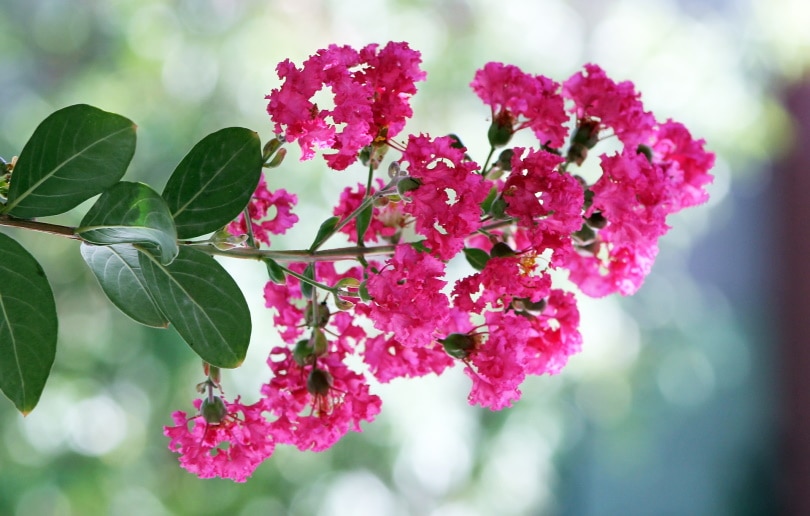
| Type | Tree |
| Height | 15-25 feet |
Crepe myrtles are popular ornamental trees that make excellent foundation plants. In the spring, they bloom with stunning colorful flowers. In the winter, they shed all of their leaves, leaving a haunting spindly look that is unique and striking in its own right. Crepe myrtles can be kept small and have very little spread during winter. If left to grow to their full height, healthy crepe myrtles can grow as tall as 25 feet.
9. Wax Myrtle

| Type | Evergreen |
| Height | 6-12 feet |
The wax myrtle strikes a stately appearance. It has olive-green shrubbery, charcoal-grey bark, and distinctive faint blue berries that appear in the winter. Wax myrtles have multiple trunks and grow in thin shapes that are perfect for a home garden. It is primarily an ornamental plant native to North America, where it thrives.
10. Cherry Laurel
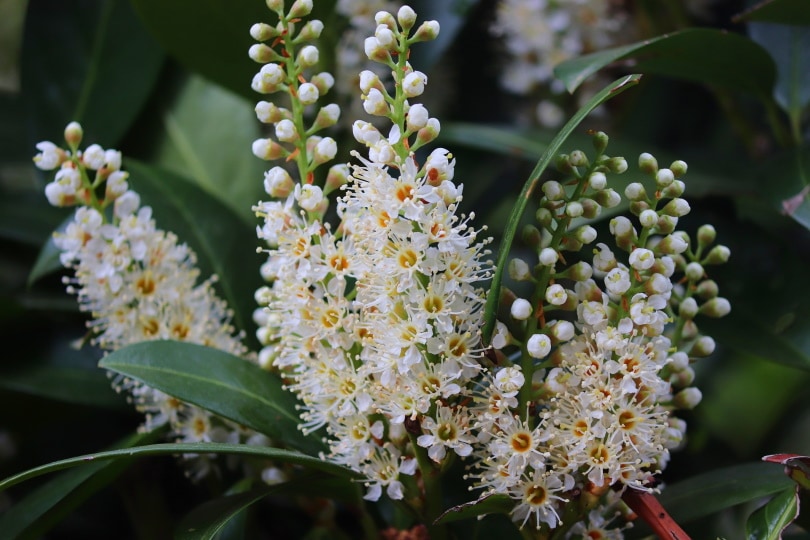
| Type | Evergreen |
| Height | 10-20 feet |
Cherry laurel is an evergreen shrub that can be kept as a bush or a hedge. Wild cherry laurels can grow as tall as 20 feet, but they are often kept much shorter for residential purposes. They require regular trimming to keep them in check, but if you commit to the upkeep, they make excellent foundation plants for any home.
11. Hicks Yew
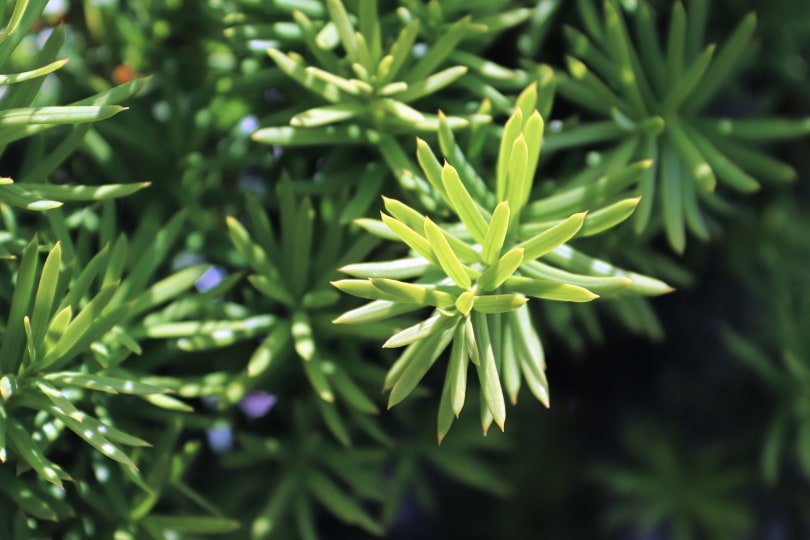
| Type | Evergreen |
| Height | 8-12 feet |
Hicks yew is a very popular hedge. It can grow in classic square rows and makes an excellent barrier bush. It also serves as a reliable foundational plant. Hicks yews grow at a steady rate and have excellent soil retention. A row of hicks yew will keep the ground stable and solid around your home, plus, it’ll add unique ornamental texture and barrier potential.
12. Star Magnolia
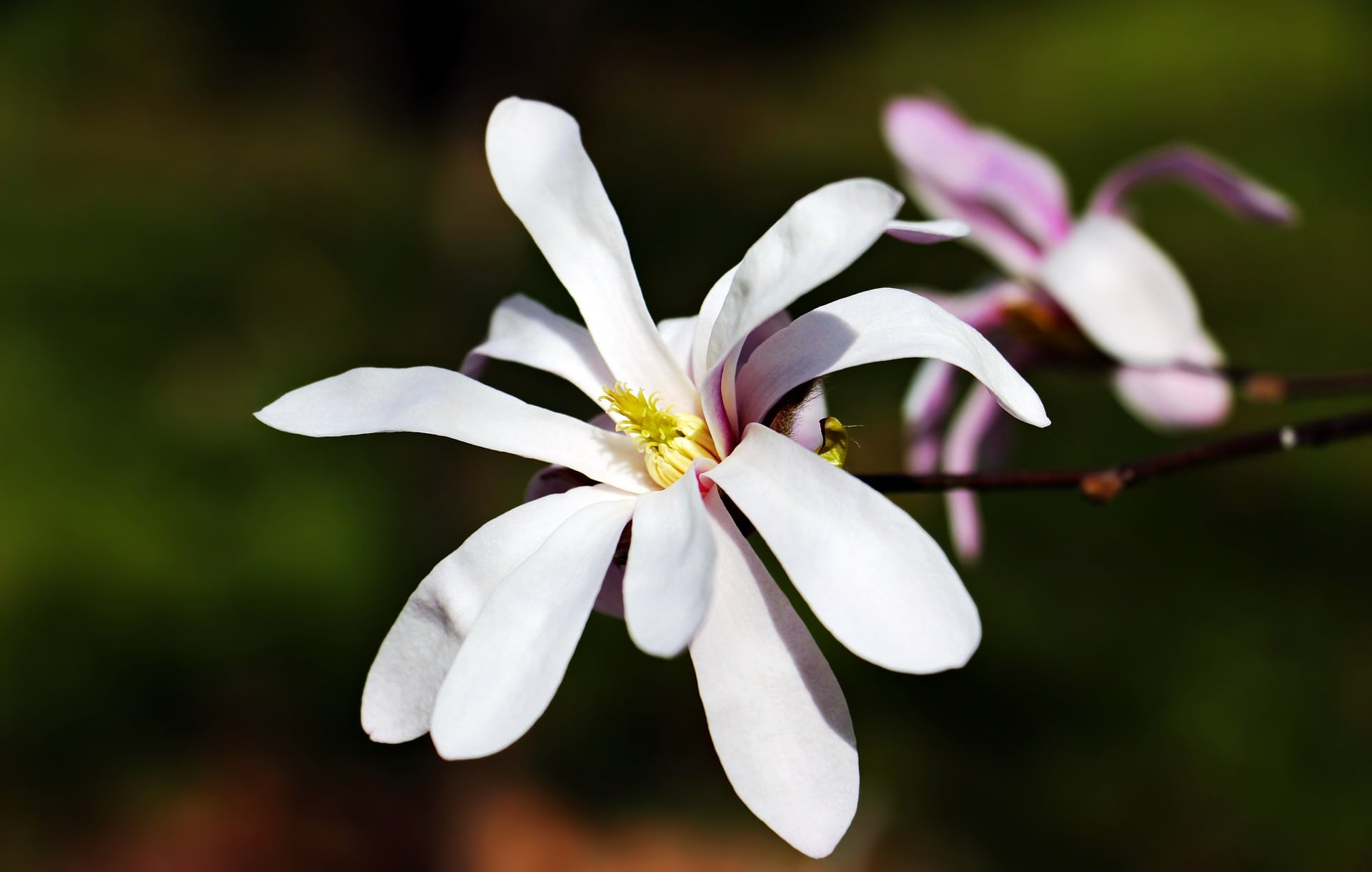
| Type | Tree |
| Height | 8-15 feet |
Star magnolias are considered small deciduous shrubs or small trees, depending on who you ask. The star magnolia is a great foundation plant because it can be kept cropped and small enough to be planted near your home with few issues. Star magnolias are known for their beautiful white flowers that bloom in late winter into spring. Small star magnolias make unique shrubs that will add to any home’s curb appeal.
13. Japanese Maple
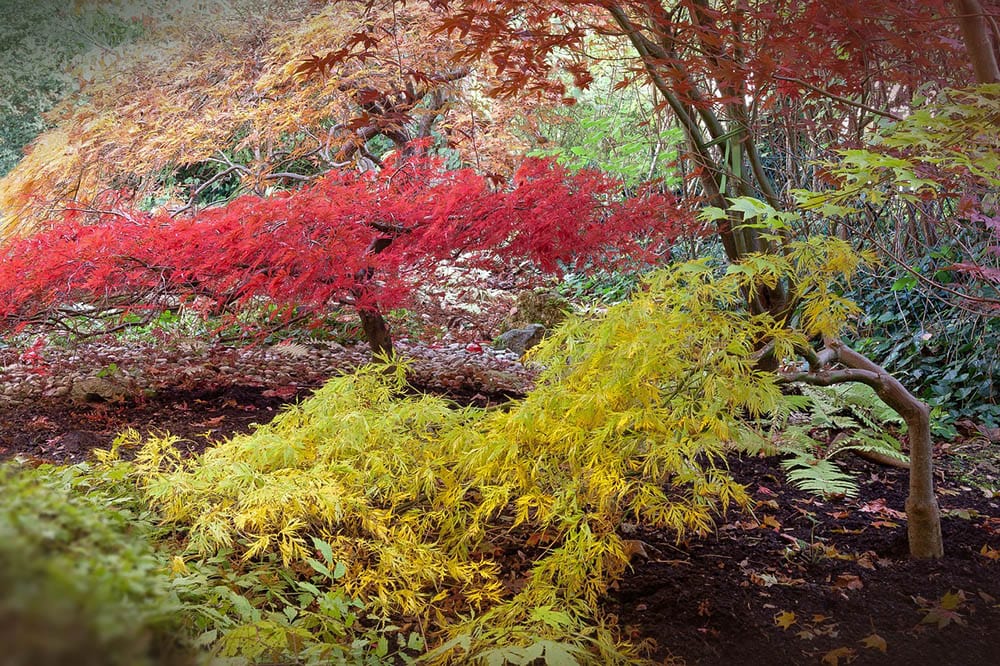
| Type | Tree |
| Height | 2-30 feet |
Japanese maples are extremely beautiful and versatile trees that can be planted very near your home. It is known for its beautiful deep red leaves and comes in a wide range of sizes. The smallest varieties can be kept as short as 2 feet and have a very small footprint. That allows them to be planted right under a window. Other larger varieties are decently sized trees that can still fit into a garden.
14. Ligustrum
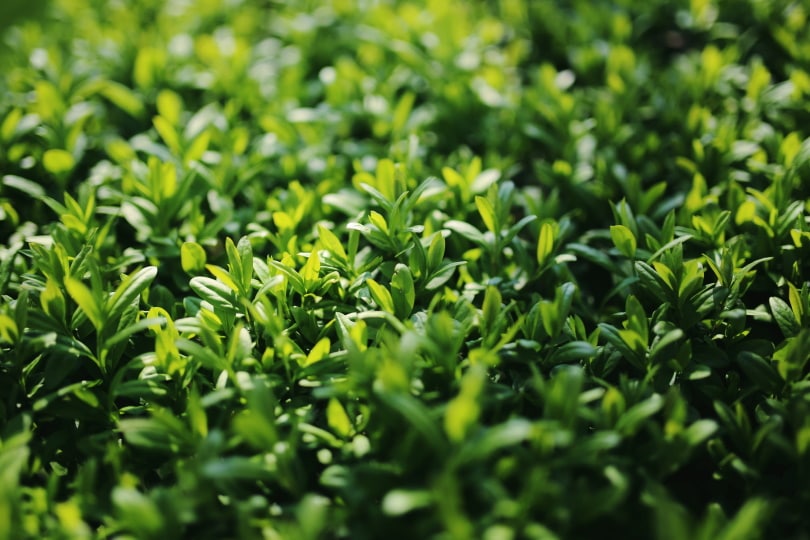
| Type | Privet |
| Height | 8-12 feet |
Ligustrum or privet, is a popular foundation shrub due to how easy it is to grow. Ligustrum is not picky about where it lives and will quickly grow into any space with little input or maintenance. The shrub will need regular trimmings to keep its size down since it will grow into a small tree if left to its own devices. Its versatility is also why the plant is very popular as a foundation plant. It can be kept as a neat shrub or allowed to grow into a unique ornamental tree.
15. Hydrangeas
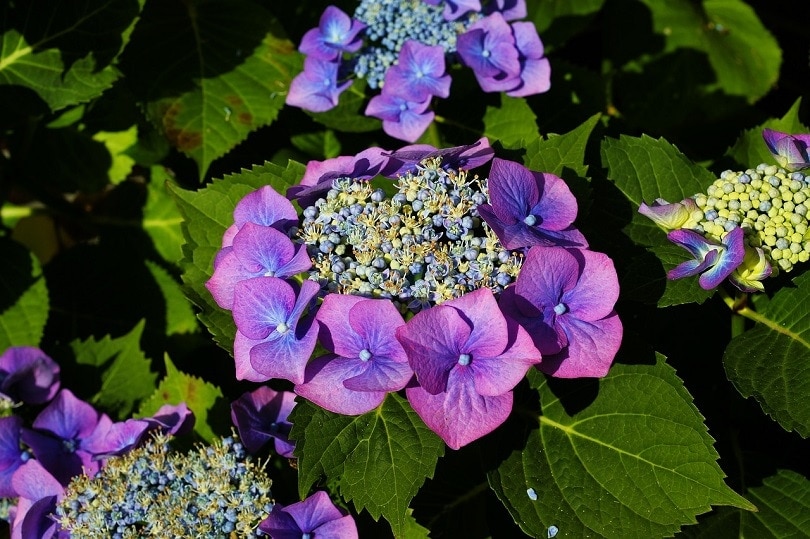
| Type | Flowering shrub |
| Height | 10-15 feet |
Hydrangeas are aromatic flowering shrubs that are popular as decorative landscape features. Hydrangeas can be planted very near the home and are one of the most floral foundation plants available. Hydrangeas encompass over 70 species of unique flowering shrubs that are found all over the world. Consult your local gardening center to pick the best variety for your area.
What Are The Benefits Of Planting Foundation Plants?
Foundation plants have two significant benefits. First, they make great ornamental pieces. Some of the most impressive landscaping features various plants that are all closely clustered around a house. This aesthetic dramatically improves curb appeal, which can help home values in the long run.
The other benefit is soil retention. Areas around a home without any plants can be subject to shifting and erosion, especially in areas with a lot of rain or water. Loose soil can rinse away, causing ugly washes. In extreme cases, shifting soil can even affect a home’s foundation. These plants help mitigate those risks while also being beautiful to look at.
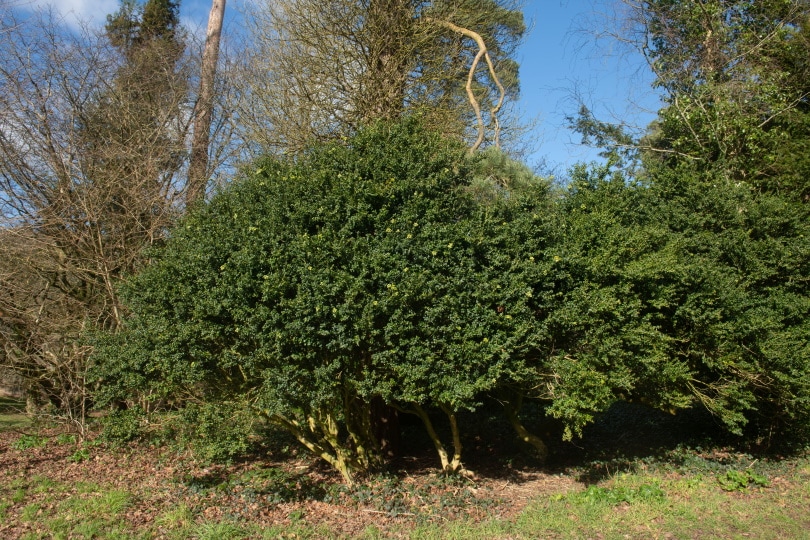
Top Things To Consider For Foundation Plants
The two most important things to consider when choosing a foundation plant that is right for you are clearance and sun requirements. Both factors are heavily influenced by your home and will determine what can be planted and where. Some foundation plants can grow very tall, and planting something under an eave or close to the roofline can require special care or regular maintenance to prevent plants from growing too tall and impacting your roof.
Similarly, sunlight is a big consideration. Many plants placed close to a house will receive a good amount of shade from the house. Some foundation plants require full sun, and if you plant something in the shade that needs full sun, you will find yourself struggling to make the plant thrive. Be sure to check the sun requirements of all foundation plants.
Conclusion
There are several foundation plants that are good for almost any occasion, especially when you want to add plants close to your house. Whether you are looking for a pop of color near your front door or a hearty hedge to shore up the loose soil, these plants have many great benefits. Foundation plants can improve home values and keep the soil around the home compact and secure.
Featured Image Credit: romakoma, Shutterstock
Contents

